In annual ritual, Delhi struggles with dengue, chikungunya
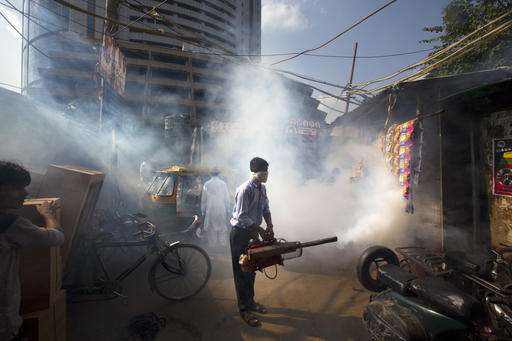
Poonam Devi moans in pain on the stretcher in the packed hospital emergency room, her ankles and wrists swollen, an IV hooked up to left arm to hydrate her.
Patients like her, fevered, aching, unable to walk or sit on their own, are packing hospitals across New Delhi because of chikungunya, a mosquito-borne viral illness. In the Indian capital alone, cases of chikungunya soared to 3,251 so far this year from just 64 last year, according to government data. Last year it was dengue, another viral ailment transmitted by mosquitoes, that infected thousands.
The cycle of illness and packed hospital "fever clinics" plays out every year as monsoon rains fill puddles and open drains in the teeming city, creating swarms of mosquitoes that thrive in the warm, damp weather.
Some years it's mainly dengue; in others, it's mostly chikungunya. The epidemics start promptly in August and stay for months, sickening tens of thousands and killing dozens, each year seeming to catch the government and population unprepared for it.
"Everyone in our neighborhood is getting it," said Devi's sister, Susheela, who goes by one name. She sat holding her sister's hand inside Ram Manohar Lohia Hospital, one of the city's largest government-run hospitals. A portion of the hospital's emergency room has been set aside for chikungunya patients like Devi.
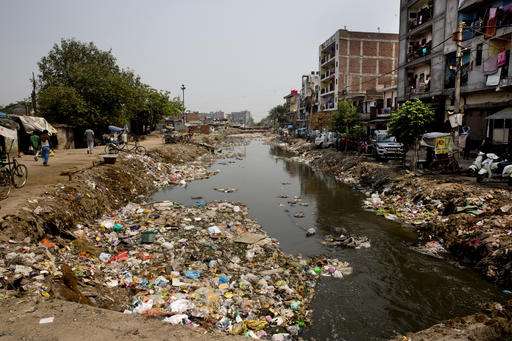
One day last week, Dr. Prerna Mor, who was supervising incoming patients at the hospital, had already seen nearly 300 patients with clinical symptoms of chikungunya in the first four hours of her shift. Mor, a fellow resident and a few nurses quickly assessed patients before other doctors took over.
Dengue and chikungunya have killed at least 20 people in the capital so far this year, according to news reports. But statistics on the illnesses are likely conservative since the poorest people in this city of 16 million never see a doctor or a hospital. Both diseases are treated only for their symptoms, reducing the fever and relieving the aches, until the infection passes. As a result, tens of thousands of people are tested at private laboratories and treated at private clinics, which don't report on what made their patients sick unless the government specifically asks.
Just as predictable as the illnesses each year is the shifting of blame as soon as the public hears of the soaring number of cases. Each year the government goes into overdrive only after hundreds if not thousands have already been sickened.
This year is no different.
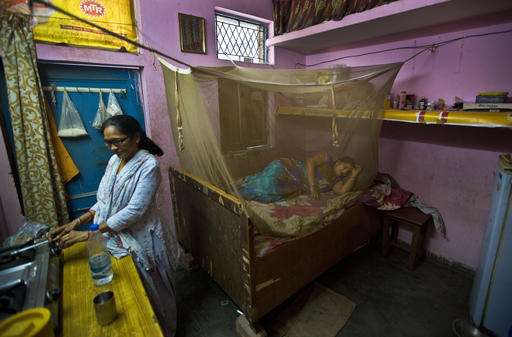
Stung by criticism that it has handled the outbreak so far very poorly, the local government has set up hundreds of clinics, like the one where Devi was diagnosed, to treat chikungunya, dengue and malaria patients. It has canceled all vacation for doctors and staff at government-run clinics and hospitals.
Hundreds of municipal workers rushed to trim knee-high grass in public parks and fog the city with anti-mosquito pesticides—after many had already gotten sick.
But experts say responsibility for controlling diseases spread by mosquitoes cannot be the government's alone. Officials conduct public-awareness advertising campaigns urging people to wear long sleeves, use mosquito repellent and get rid of standing water. But the advice is routinely ignored, even with municipal workers going from home to home in some neighborhoods on the lookout for mosquito breeding areas.
"There's no community participation here. People want the government to take the entire responsibility of keeping their neighborhoods clean," said Dr. A.K. Gadpayle, medical superintendent at Ram Manohar Lohia Hospital.
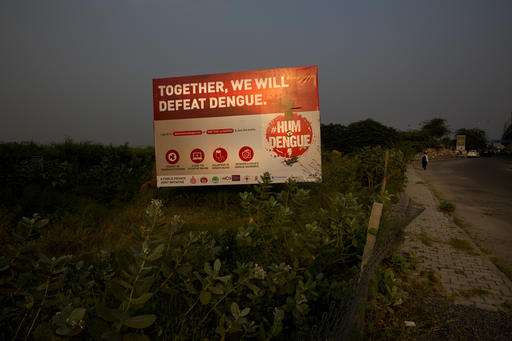
Without the communities coming together to ensure mosquitoes don't breed, "no government anywhere in the world can succeed," he added.
The annual outbreak comes as health experts and governments contemplate the potential for a global outbreak of another mosquito-borne illness, Zika. Like dengue and chikungunya, Zika is transmitted by the Aedes aegypti and Aedes albopictus mosquitoes.
A recent study published in medical journal Lancet says 2.6 billion people living in parts of Asia and Africa could be at risk of Zika infection, based on analysis of travel, climate and mosquito patterns in those regions.
But experts in India caution that the study may exaggerate the risks because the Zika virus has been around since the late 1940s and it's not clear if the virus had reached these countries sometime in the past, allowing people to build immunity.
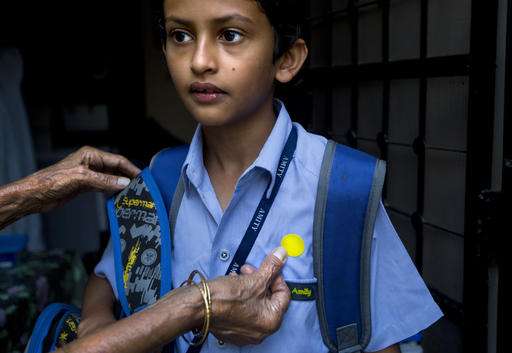
Zika can cause fetal death and severe brain defects in the children of women infected during pregnancy. Yet the vast majority of people infected never get sick, and symptoms are mild for those who do, so surveillance systems may have missed cases.
No cases of Zika have been reported in India so far.
"In the times of rapid international travel, and international mass gatherings such as the FIFA World Cup and the Olympics, or religious gatherings like the hajj, there is always a potential threat of import of Zika infection," said Dr. Lalit Pant, an infectious diseases specialist at the Public Health Foundation of India.
But the country has facilities to test people for Zika if cases are reported, Pant added. "We know what to do. The challenge is how well can we do."
At Ram Manohar Lohia Hospital, Gadpayle isn't too concerned about Zika. He has his hands full with chikungunya this year.
-
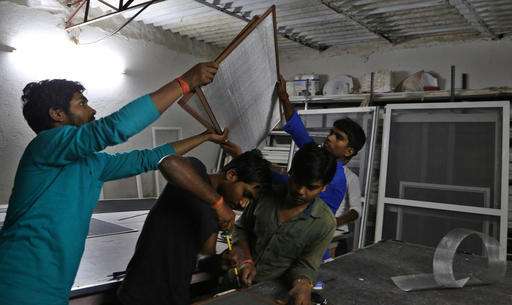
In this Monday, Sept. 26, 2015 photo, Indian workers make mesh frames for windows, used primarily to keep mosquitoes out of homes, at a factory in Bangalore, India. A recent study published in medical journal Lancet says 2.6 billion people living in parts of Asia and Africa could be at risk of Zika infection, based on analysis of travel, climate and mosquito patterns in those regions. (AP Photo/Aijaz Rahi) -
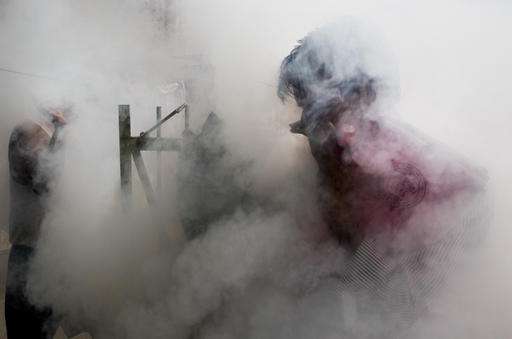
In this Thursday, Sept. 15, 2016 photo, a passerby covers his nose as he walks past smoke from fumigation administered to check the spread of mosquito-borne diseases in New Delhi, India. This year the Indian capital has seen the numbers for Chikungunya soar to more than 3,000 from just 64 last year, according to government data. Each year the city seems equally unprepared for the epidemic of Dengue and Chikungunya, viral ailments transmitted by mosquitoes, that arrives promptly in August and lingers for months sickening tens of thousands and killing dozens. It's a cycle that's played out every year after the monsoon rains have filled puddles and open drains and the warm, damp weather is perfectly suited for swarms of mosquitoes. (AP Photo/Manish Swarup) -
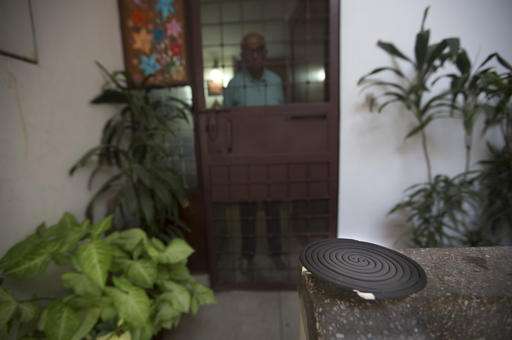
In this Wednesday, Sept. 28, 2016, photo, a mosquito repellant coil burns outside a house in New Delhi, India. The epidemics of dengue and chikungunya, mosquito-borne viral illnesses, start promptly in August and stay for months, sickening tens of thousands and killing dozens, each year seeming to catch the government and population unprepared for it. The annual outbreak comes as health experts and governments contemplate the potential for a global outbreak of another mosquito-borne illness, Zika. (AP Photo/Manish Swarup) -
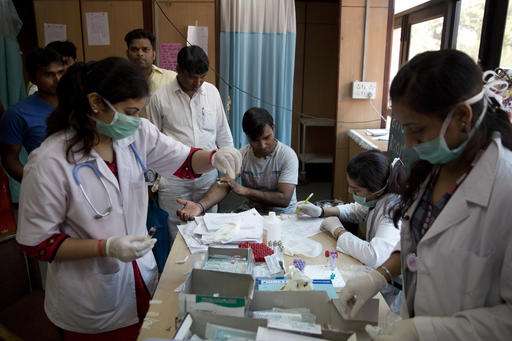
In this Thursday, Sept. 15, 2016 photo, a patient has his blood taken to be tested at a fever clinic especially set up to cater to those suffering from fever, one of the main symptoms of several mosquito-borne diseases, at Ram Manohar Lohia hospital in New Delhi, India. Hospitals are crowded with patients fevered and aching as mosquito-borne illnesses sweep through teeming New Delhi. The cycle plays out every year after the monsoon rains fill puddles and create swarms of mosquitoes. The dengue and chikungunya illnesses sicken tens of thousands in the seemingly unprepared city. (AP Photo/Manish Swarup) -
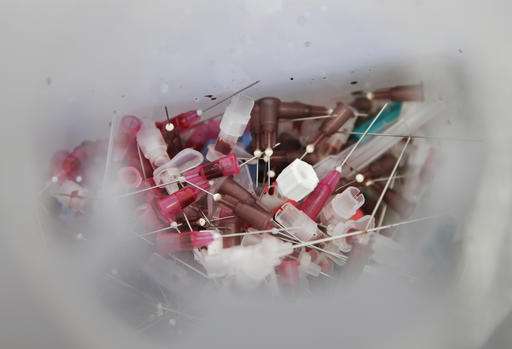
In this Wednesday, Sept. 21, 2016 photo, syringes used to draw blood from patients to test for mosquito-borne viral ailments lie at a fever clinic at Ram Manohar Lohia hospital in New Delhi, India. Hospitals are crowded with patients fevered and aching as mosquito-borne illnesses sweep through teeming New Delhi. The cycle plays out every year after the monsoon rains fill puddles and create swarms of mosquitoes. The dengue and chikungunya illnesses sicken tens of thousands in the seemingly unprepared city. (AP Photo/Saurabh Das) -
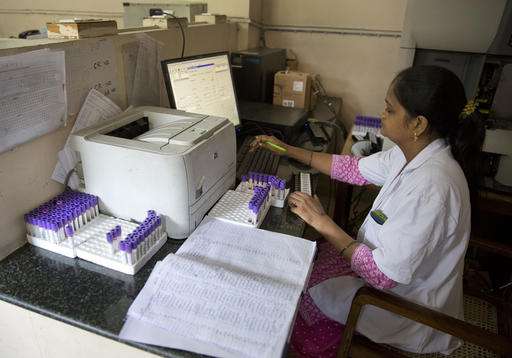
In this Tuesday, Sept. 27, 2016 photo, a laboratory worker arranges blood samples to test for mosquito-borne viral ailments, in Gurgaon, on the outskirts of New Delhi, India. Hospitals are crowded with patients fevered and aching as mosquito-borne illnesses sweep through teeming New Delhi. The cycle plays out every year after the monsoon rains fill puddles and create swarms of mosquitoes. The dengue and chikungunya illnesses sicken tens of thousands in the seemingly unprepared city. (AP Photo/Manish Swarup) -
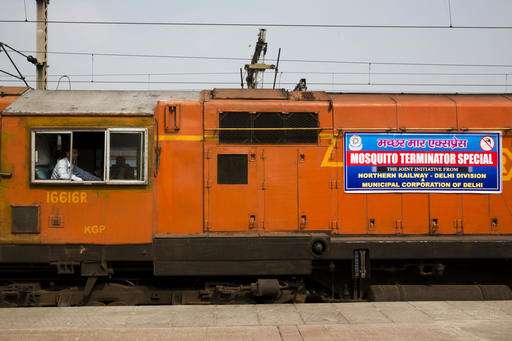
In this Sept. 23, 2016 photo, a train carrying fumigation trucks prepares for a trip to fumigate areas lying along the railway track to check the spread of mosquito-borne diseases, at the New Delhi railway station, India. It's a cycle that's played out every year after the monsoon rains have filled puddles and open drains and the warm, damp weather is perfectly suited for swarms of mosquitoes. Each year the city seems equally unprepared for the epidemic of Dengue and Chikungunya that arrives promptly in August and lingers for months sickening tens of thousands and killing dozens. (AP Photo) -
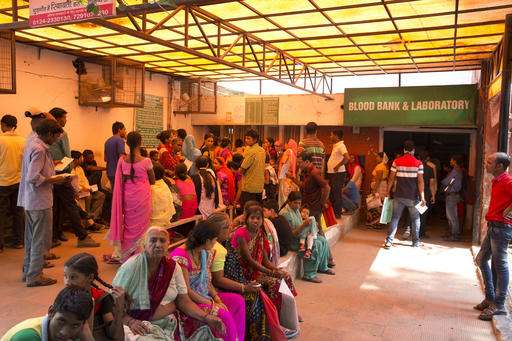
In this Tuesday, Sept. 27, 2016 photo, people wait to receive reports of their blood samples given to test mosquito-borne viral ailments, in Gurgaon, on the outskirts of New Delhi, India. The hospitals of New Delhi are crowded with patients writhing in pain as yet another round of mosquito-borne viral ailments sweep through this teeming city. It's a cycle that's played out every year after the monsoon rains have filled puddles and open drains and the warm, damp weather is perfectly suited for swarms of mosquitoes. (AP Photo/Manish Swarup) -
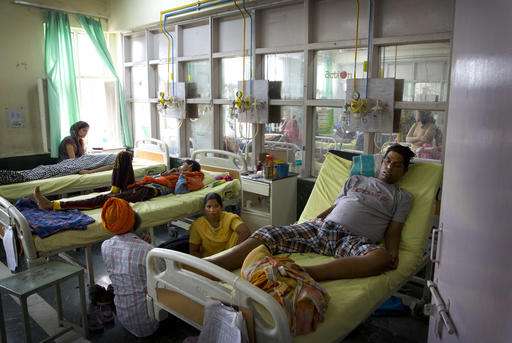
In this Thursday, Sept. 15, 2016 photo, patients receive treatment at a fever clinic especially set up to cater to those suffering from fever, one of the main symptoms of several mosquito-borne diseases, at Ram Manohar Lohia hospital in New Delhi, India. The hospitals of New Delhi are crowded with patients writhing in pain as yet another round of mosquito-borne viral ailments sweep through this teeming city. It's a cycle that's played out every year after the monsoon rains have filled puddles and open drains and the warm, damp weather is perfectly suited for swarms of mosquitoes. (AP Photo/Manish Swarup) -
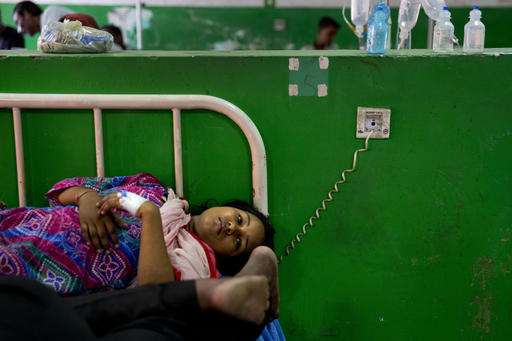
In this Tuesday, Sept. 27, 2016 photo, a woman receives treatment for high fever, one of the main symptoms of viruses caused by mosquitoes, at a government hospital in Gurgaon, on the outskirts of New Delhi, India. The hospitals of New Delhi are crowded with patients writhing in pain as yet another round of mosquito-borne viral ailments sweep through this teeming city. It's a cycle that's played out every year after the monsoon rains have filled puddles and open drains and the warm, damp weather is perfectly suited for swarms of mosquitoes. (AP Photo/Manish Swarup)
© 2016 The Associated Press. All rights reserved.
















